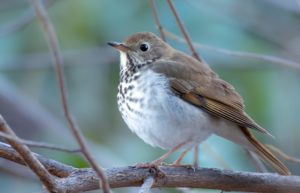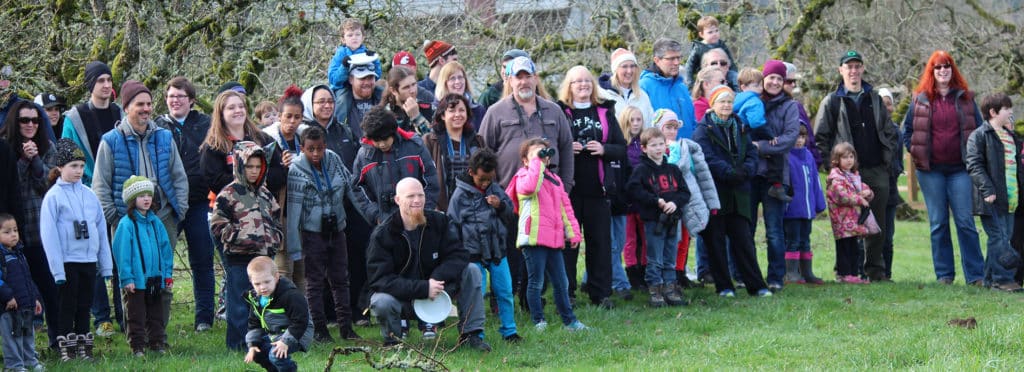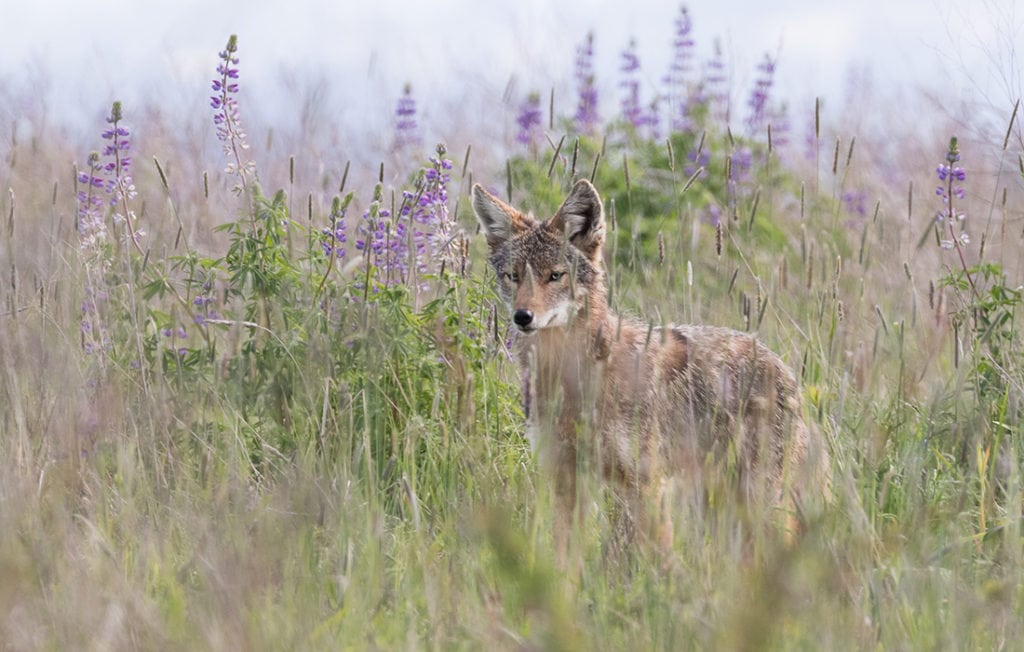Townsend’s Warbler
The Townsend’s Warbler is one of our most colorful wintering birds and a favorite at bird feeding stations. As spring progresses, Townsend’s Warblers start finding more food away from feeders, and by mid-April they are starting to migrate. At least some of the Townsend’s Warblers that winter in the Portland area head north to breed on Vancouver Island and Haida Gwaii. A new wave of migratory Townsend’s Warblers are now arriving from the highlands of Central Mexico, Guatemala, and Honduras, and their numbers will peak in the next two weeks. Some of these inbound birds will breed in the Cascade Mountains.

Hermit Thrush
The Hermit Thrush is an uncommon winter visitor in the Portland area. They are often seen hiding in dense brush and spend most of their time on or near the ground. They are occasionally enticed into the open by insects and berries. Numbers pick up as they move through our area from mid-April to early May. Our wintering birds (subspecies guttatus) head north to breeding grounds in the western mountains of British Columbia through Alaska. A separate subspecies (auduboni) breeds in Oregon, and includes coastal mountain breeders that arrive from Baja as well as Cascade Mountain breeders that arrive from Arizona and NW Mexico. Hermit Thrush migration overlaps briefly in early May with the similar Swainson’s Thrush that will be arriving from Southern Mexico and Central America.

Purple Finch
Like most finches, the Purple Finch is highly nomadic and concentrates in areas where their preferred food is available. Winter numbers are unpredictable in Portland and most spend the winter to the south of our area. Beginning in March many migrate north from as far away as California.Favorite winter foods include Oregon Ash and conifer seeds and rose hips. However, in the spring they turn to eating flower petals, tree buds, and insects. Watch for Purple Finches passing through neighborhoods and dropping in at bird feeders through early May. Breeders in our area are found mostly in mature coniferous forest where you can hear their rich warbling song emanating from the tops of the highest trees.

Vaux’s Swift
Though the first Vaux’s Swifts are reported around the second week of April, the main wave of migrants become more noticeable from April 20 through the first week of May. Portland area birds arrive from Mexico, Guatemala and Honduras. A diurnal migrant, large numbers may be encountered during inclement weather, otherwise they tend to migrate very high. Vaux’s Swift will use chimneys and hollowed tree trunks (especially in old growth forests) for both night roosting and nesting. They also have been seen roosting on the outer trunks of trees. Check out www.vauxhappening.org for more about Vaux’s Swifts.




